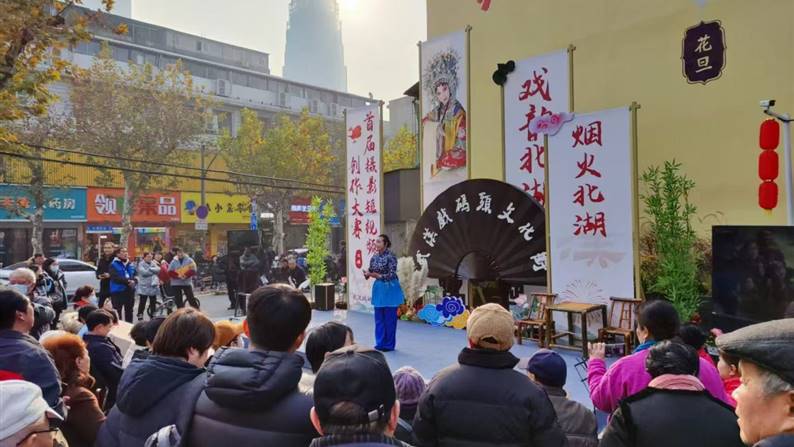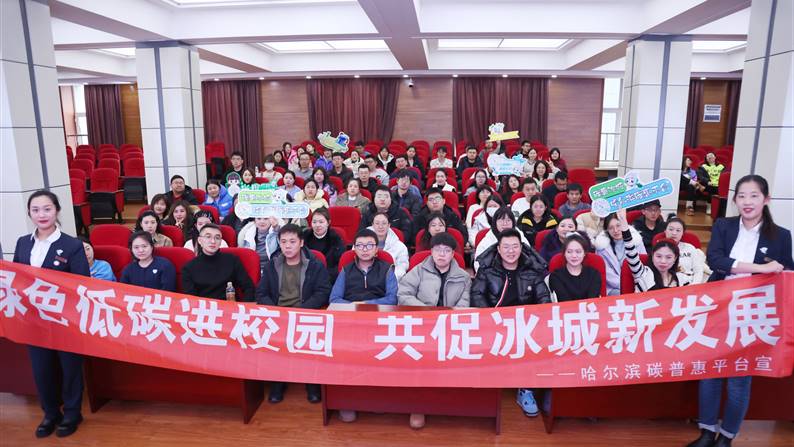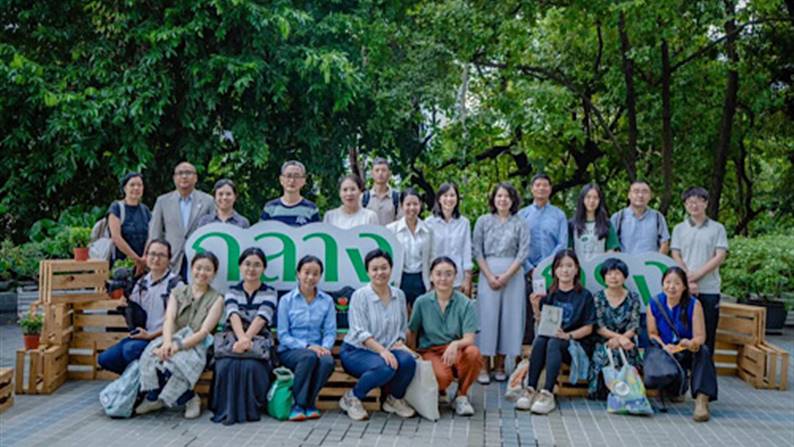

In front of the hydrogen machine,
the staff inserted the hydrogen gun, and ten minutes later, the cold chain
logistics vehicle driver Gao Xin's car completed the hydrogen filling. Gaoxin
is a frequent visitor to Haiper Hydrogenation Demonstration Station in Daxing
International Hydrogen Energy Demonstration Zone, where he drives his own
hydrogen fuel cell refrigerated truck almost every day or two.
"It's been almost a year since
I switched from a diesel car to a hydrogen car, which is not only more
environmentally friendly, but also easy and labor-saving to drive." Once you add hydrogen, you can run
350 kilometers. Gao Xin introduced that he mainly runs transportation between
Daxing and Changping. Compared with the current diesel price, the cost of 100
kilometers of hydrogen vehicles can save 20 to 30 yuan.
During the Beijing Olympic Winter
Games and the Winter Paralympic Games, a number of event service vehicles
powered by green hydrogen energy brought hydrogen fuel cell vehicles into
public view. In July 2022, 212 demonstration hydrogen energy buses tested by
the Winter Olympics standard were equipped with on-board service equipment and
put into operation as buses from Yanqing District, Fangshan District to the
urban area of Beijing. According to statistics, the annual carbon reduction of
these hydrogen buses is about 8000 tons.
Hydrogen fuel cell is a power
generation device that directly converts the chemical energy of hydrogen and
oxygen into electric energy, with a power generation efficiency of more than
60%, which can be used as vehicle power. Hydrogen fuel cell has the
characteristics of no pollution, no noise, high efficiency, low temperature
start-up at minus 40 degrees Celsius, and "zero emission" in the
process of generating electricity, which is considered as one of the ideal
solutions to energy and environmental problems. In March 2022, the National
Development and Reform Commission and the National Energy Administration
jointly issued the Medium and Long-term Plan for the Development of Hydrogen
Energy Industry (2021-2035), which put forward the goals of each stage of the
development of hydrogen energy industry, and planned to basically master the
core technology and manufacturing process by 2025, with about 50000 fuel cell
vehicles.
At present, China's hydrogen fuel
cell vehicle industry is still in its infancy. According to Ji Kaibin, chairman
of Beijing Haiper Energy Management Co., Ltd., the vehicles coming to the
hydrogenation station every day are mainly buses, buses, cold chain logistics,
sanitation, traction and other commercial vehicles. The daily hydrogenation
capacity we designed can reach 4.8 tons, and the current daily hydrogenation
capacity is about two or three tons.
Next to the hydrogen station is
Daxing International Hydrogen Energy Demonstration Zone, the largest hydrogen
energy industry gathering place in Beijing-Tianjin-Hebei region. Xie Tao,
Director of Industrial Service Department of the Demonstration Zone, said that
relying on the advantages of industrial resources of Beijing Tsinghua Industrial
Development Research Institute, the Demonstration Zone has constructed a
hydrogen energy industry ecosystem with hydrogenation demonstration station,
hydrogen energy exchange center and science and technology park as carriers.
The demonstration area has gathered 135 hydrogen energy-related enterprises
such as Sinohytec and WenliTech.
In Sinohytec's production workshop,
dozens of skilled workers are busy assembling on the production line, while
robots assist in handling, lifting and other work through laser, visual
navigation and positioning technology.
"Core technology is the
foundation of enterprises. In recent years, we have continuously promoted the
renewal and iteration of fuel cell products, conquered a series of key
technologies such as fuel cell system, stack, bipolar plate and membrane
electrode, and promoted the collaborative innovation of upstream and downstream
of the industrial chain, with the localization rate of components reaching
100%." Fang Chuan, R&D director of Beijing Sinohytec Science and Technology Co., Ltd., said that the
rated power of the vehicle fuel cell engine system independently developed and
manufactured by the company reached 240 kilowatts, which achieved a new
breakthrough in high-power hydrogen fuel cell engine, extended the application
of hydrogen energy to long-distance and heavy-duty fields, and provided
necessary technical support for the low-carbon development of heavy trucks.
Ouyang Minggao, chairman of the
International Hydrogen Fuel Cell Association, academician of the Chinese
Academy of Sciences and professor of Tsinghua University, said that as one of
the important means to support the realization of the "double carbon"
goal, the hydrogen energy industry is still in its early stage of development.
As an important part of the hydrogen energy industry chain, the R&D
investment and use cost of hydrogen fuel cell vehicles are still very high,
which requires policy support from the state and local governments from the
whole hydrogen energy industry chain. At present, it is urgent to tackle key
core technologies such as hydrogen fuel cells and electrolysis devices, and
speed up the improvement of the industrial chain and related supporting
facilities.
It is reported that the Beijing-Tianjin-Hebei region is jointly carrying out the industrialization of key core technologies of hydrogen fuel cell vehicles and the construction of demonstration and application urban agglomerations. It is estimated that by 2025, the Beijing-Tianjin-Hebei region will achieve a cumulative scale of more than 100 billion yuan in the hydrogen energy industry chain and reduce carbon emissions by 2 million tons.
在加氢机前停车,工作人员插入加氢枪,十来分钟之后,冷链物流车司机高鑫的车就完成了氢能加注。高鑫是大兴国际氢能示范区海珀尔加氢示范站的常客,几乎每隔一两天就驾驶自己的氢燃料电池冷藏车来这里加氢。
“我从柴油车换成氢能车快一年了,不仅更环保,而且开起来也轻松、省力。加一次氢,可以跑350公里路程。”高鑫介绍,他主要在大兴、昌平之间跑运输,与当前的柴油价格相比,氢能车的百公里费用能省二三十元。
北京冬奥会和冬残奥会期间,一批以绿色氢能为动力的赛事服务车辆让氢燃料电池汽车走入大众视野。2022年7月,经受冬奥标准检验的212辆示范应用氢能大巴车加装了车载服务设备,作为公交车投入北京市延庆区、房山区至市区的公交线路运营。据统计,这批氢能公交车每年减碳量在8000吨左右。
氢燃料电池是将氢气和氧气的化学能直接转换成电能的发电装置,发电效率超过60%,可以作为汽车动力。氢燃料电池具备无污染、无噪声、高效率、零下40摄氏度低温启动的特点,而且在产生电能的过程中“零排放”,被认为是解决能源和环境问题的理想方案之一。2022年3月,国家发改委、国家能源局联合印发《氢能产业发展中长期规划(2021—2035年)》,提出了氢能产业发展各阶段目标,计划到2025年基本掌握核心技术和制造工艺,燃料电池车辆保有量约5万辆。
目前我国氢燃料电池汽车产业仍处于起步阶段。据北京海珀尔能源管理有限公司董事长吉凯滨介绍,每天来加氢站的车辆以大巴、公交、冷链物流、环卫、牵引等商用车型为主。“我们设计的日加氢量可达4.8吨,目前每天的加氢量在两三吨左右。”
加氢站旁边,就是目前京津冀地区最大的氢能产业聚集地——大兴国际氢能示范区。示范区产业服务部总监谢韬谈道,示范区依托北京清华工业开发研究院产业资源优势,构建以加氢示范站、氢能交流中心、科技园区为载体的氢能产业生态体系。示范区已集聚了亿华通、稳力科技等135家氢能相关企业。
在亿华通的生产车间内,数十名技术工人正在生产线上紧张地组装;机器人则通过激光、视觉导航定位等技术,辅助完成搬运、抬升等工作。
“核心技术是企业立足之本,我们近年来持续推动燃料电池产品更新迭代,攻克了燃料电池系统、电堆、双极板及膜电极等一系列关键技术,带动了产业链上下游协同创新,零部件国产化率达到100%。”北京亿华通科技股份有限公司研发总监方川说,企业自主研发生产的车用燃料电池发动机系统额定功率达到240千瓦,实现了大功率氢燃料电池发动机的新突破,把氢能应用拓展到长途、重载领域,并为重卡低碳化发展提供了必要的技术支撑。
国际氢能燃料电池协会理事长、中国科学院院士、清华大学教授欧阳明高表示,作为支撑“双碳”目标实现的重要手段之一,氢能产业仍处于发展初期。作为氢能产业链环节中的重要组成部分,氢燃料电池汽车研发投入和使用成本依然很高,需要国家和地方政府从氢能全产业链给予政策支持。当前,亟须对氢燃料电池、电解装置等关键核心技术开展攻关,并加快完善产业链和相关配套设施。
据悉,京津冀地区正在联合开展氢燃料电池汽车关键核心技术产业化攻关和示范应用城市群建设。预计到2025年,京津冀地区将累计实现氢能产业链产业规模1000亿元以上,减少碳排放200万吨。

打造绿色低碳街区,奏响幸福美好生活最强音
10-18 · 来源:湖北省武汉市江汉区北湖街道环保社区 · 作者:湖北省武汉市江汉区北湖街道环保社区

“碳惠冰城”:东北首个市级平台的“双碳”实践与冰城示范
10-15 · 来源:哈尔滨产权交易所有限责任公司 · 作者:哈尔滨产权交易所有限责任公司

亚洲气候治理新篇章:中国公益代表团参访曼谷气候周,探索跨区域合作新路径
10-10 · 来源:公益时报 · 作者:公益时报